March 20, 2018
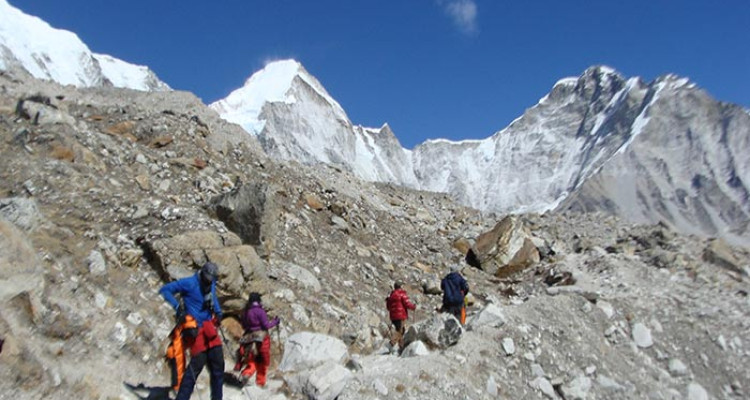
Trekking to Everest Base Camp and Kalapather is one of the most renowned walking and trekking experiences in Nepal. Before embarking on this high-altitude trek, there are some important tips to keep in mind. The trek begins in Lukla, with a short but scenic flight from Kathmandu. The trails then pass through the Sagarmatha National Park, located at Monjo Village (2850 m), before reaching Namche Bazaar, Tengboche, and Dingbuche. Along the way, hikers will be treated to stunning views of Mt. Lhotse, Makalu, Nupste, Ama Dablam, and Mt. Everest. After 7 days of trekking from Lukla, the trails lead to Gorakshep, the highest place to sleep during the trek. The sights at both Everest Base Camp and Kalapather are absolutely breathtaking, and will leave a lasting impression on all who visit.
Here are some useful tips for Everest Base Camp and Kalapather Trek:
When trekking in the Everest region, most travelers opt to fly from Lukla to Kathmandu after completing the trek, as it is a much quicker option than taking a bus that can take several days to complete the journey to Everest Base Camp. Lukla is known as the gateway to the Everest trek and is a small airport located on the eastern side of Nepal’s North Mountain region. However, it’s worth noting that this airport was listed as one of the most dangerous airports in the world back in 2009 due to its short 575m airstrip and unpredictable weather conditions.
As a trek and tour operator, I highly recommend allowing for some extra days in your itinerary for the Everest Base Camp trekking experience. This is because flight delays are common due to the misty skies in Kathmandu and the unpredictable weather in Lukla. It’s important to book your flight from Lukla to Kathmandu with a fixed date to avoid any complications, as you may have to hire a chopper or even miss your international flight.
In the event that your flight from Lukla to Kathmandu is on time, you can use the extra time to explore the city through day tours of world heritage and religious sites or even treat yourself to a local spa and massage to recover from the trek. Overall, planning ahead and being flexible with your itinerary will ensure a safe and enjoyable trekking experience in the Everest region.

While trekking to the Everest Base Camp area, it can be beneficial to carry electronic devices to enhance your experience and ensure your safety during the trek. Here are some electronic devices that you may want to consider bringing with you:
When carrying electronic devices, it’s important to keep them safe and dry. You may want to invest in a waterproof case or dry bag to protect them from moisture and dust. Additionally, make sure you pack extra batteries and chargers for your devices to avoid any inconvenience during your trek. Overall, electronic devices can enhance your trekking experience and ensure your safety, but it’s important to use them responsibly and in accordance with local regulations
A comprehensive insurance policy for trekking in the Everest Region typically covers a range of risks and potential emergencies that could occur during the trek. These risks might include high altitude sickness, accidents, injuries, illnesses, and emergency medical evacuations.
A typical insurance policy for trekking in the Everest Region might provide coverage for the following:
It’s important to carefully review the terms and conditions of any insurance policy you are considering, as the specific coverage and limits can vary widely between policies and insurance providers. You should also make sure that the policy covers the specific activities you plan to undertake during your trek in the Everest Region.
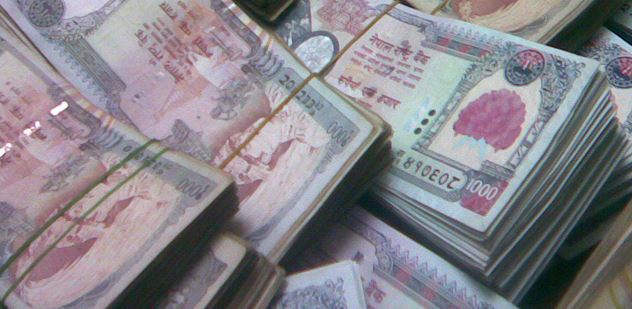
Nepali currency is called the Nepalese Rupee (NPR), and it is the official currency of Nepal. As of my knowledge cutoff of 2021, the exchange rate was approximately 1 USD to 120 NPR, but it is always best to check the current exchange rate before traveling to Nepal.
When preparing for an Everest trekking adventure in Nepal, it is advisable to bring both cash and credit cards for your expenses. While many places in Kathmandu and larger cities may accept credit cards, cash is often the preferred method of payment, especially in smaller towns and remote areas.
The Nepalese Rupee is available in banknotes and coins. The banknotes come in denominations of 1, 2, 5, 10, 20, 50, 100, 500, and 1,000 NPR. The coins are available in denominations of 1, 2, 5, and 10 NPR.
It is essential to keep in mind that smaller denominations of NPR are more useful as they are more widely accepted. Additionally, it is always best to carry small bills and coins as many shops, cafes, and restaurants may not have change for larger bills.
It is also important to note that foreign currencies are not widely accepted in Nepal, except in large hotels and restaurants. Therefore, it is recommended to exchange your foreign currency for Nepalese Rupees upon arrival at the airport or at a local bank. You can also withdraw money from ATMs using your credit or debit card, but keep in mind that ATM fees may apply.
Overall, carrying Nepalese Rupees in cash is the most practical way to pay for goods and services during an Everest trekking adventure in Nepal. It is always a good idea to carry a sufficient amount of cash with you while trekking as ATMs and banks may not be readily available in remote areas.
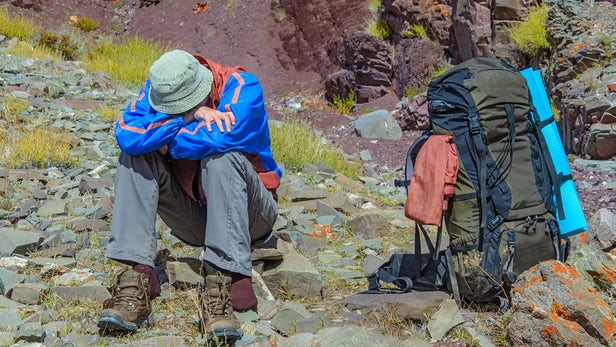
Yes, altitude sickness is a potential concern for anyone undertaking an Everest Base Camp trek. Altitude sickness, also known as acute mountain sickness (AMS), is a condition caused by reduced air pressure and lower oxygen levels at high altitudes.
Some of the common symptoms of altitude sickness include headache, nausea, vomiting, dizziness, fatigue, and shortness of breath. In severe cases, altitude sickness can lead to fluid buildup in the lungs or brain, which can be life-threatening.
To avoid altitude sickness, it is recommended that trekkers acclimatize themselves gradually by spending at least two to three days at lower altitudes before ascending further. Additionally, staying well-hydrated, avoiding alcohol and tobacco, and maintaining a slow and steady pace while trekking can help reduce the risk of altitude sickness.
If you do experience symptoms of altitude sickness, it is important to rest and drink plenty of fluids. If symptoms persist or worsen, descending to a lower altitude is often the most effective treatment.
It is also recommended to be aware of the signs of high altitude pulmonary edema (HAPE) and high altitude cerebral edema (HACE), which are more severe forms of altitude sickness. Symptoms of HAPE include shortness of breath, coughing, and chest tightness, while symptoms of HACE include confusion, disorientation, and loss of coordination.
In summary, altitude sickness is a serious concern for anyone undertaking an Everest Base Camp trek, and it is essential to take precautions to avoid it. If you experience any symptoms of altitude sickness, it is important to take them seriously and seek medical attention if necessary.
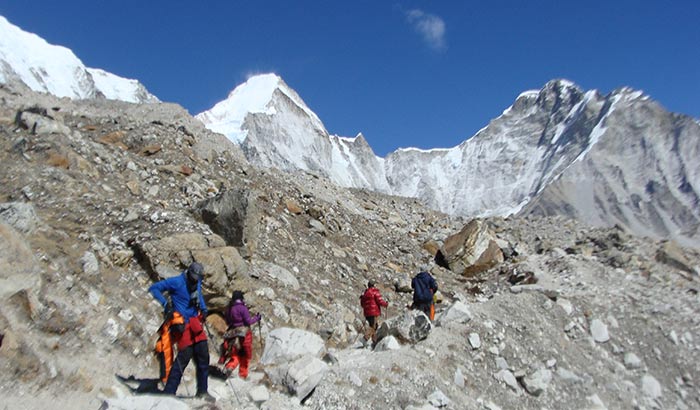
“No bargain in the Himalayas” is a phrase that means there are no shortcuts or easy ways to achieve something. The phrase refers to the harsh and challenging terrain of the Himalayan mountain range, which is known for its difficult climbs and treks.
In a broader sense, the phrase implies that anything worth achieving requires hard work, dedication, and perseverance. There are no shortcuts or easy paths to success or achievement. The phrase encourages people to be prepared to put in the effort and work hard to achieve their goals, just as climbers must be prepared to face the challenges of the Himalayas.
Going on an Everest Base Camp trek can be a challenging and rewarding experience, but it’s essential to prepare adequately to ensure your safety and enjoyment of the trip. One of the most critical aspects of preparing for this trek is getting the proper training.
Here are some tips for getting the right training for your Everest Base Camp trek:
Start with cardiovascular exercise: Trekking at high altitudes requires a lot of endurance, so it’s important to focus on building your cardiovascular fitness. You can do this by incorporating activities like hiking, running, or cycling into your routine.
Focus on strength training: In addition to cardio, you’ll need to build strength in your legs, core, and upper body to handle the demands of the trek. Squats, lunges, deadlifts, and planks are excellent exercises to build overall strength.
Practice hiking with a backpack: Carrying a backpack with all your gear can add a significant amount of weight, which can be challenging if you’re not used to it. Start practicing with a weighted backpack before your trek to get used to the extra weight and develop the right muscles.
Train at altitude: If possible, try to do some training hikes at higher altitudes to get used to the thinner air. This will also give you an opportunity to acclimate to the altitude before your trek.
Consider hiring a guide: Hiring a guide who is familiar with the terrain and altitude can help you prepare better for the trek. They can provide you with valuable information about the trek, advise you on what to bring, and give you a better idea of what to expect.
In summary, getting the proper training is crucial for a successful and safe Everest Base Camp trek. By incorporating cardio, strength, backpack training, altitude training, and potentially hiring a guide, you can prepare yourself for the physical and mental demands of the trek.
Choosing the right gear list for the Everest Base Camp trek is crucial for a safe and comfortable experience. Here is a recommended gear list that will help you prepare for the trek:
Clothing
Footwear
Backpack
Sleeping Gear
Accessories
Miscellaneous
It’s essential to pack light and only bring what’s necessary for the trek, as porters will be carrying your gear. It’s also a good idea to check the weather forecast before the trek and adjust your gear accordingly. Finally, consider investing in high-quality gear that is durable and comfortable for the long trek.
Acclimatize properly to minimize the chances of altitude sickness.
Acclimatization is crucial when trekking at high altitudes to minimize the risk of altitude sickness. Here are some tips to help you acclimatize properly:
Acclimatization is a gradual process, and it’s essential to give your body enough time to adjust to the altitude. Proper acclimatization can help minimize the risk of altitude sickness, ensuring a safe and enjoyable trekking experience.
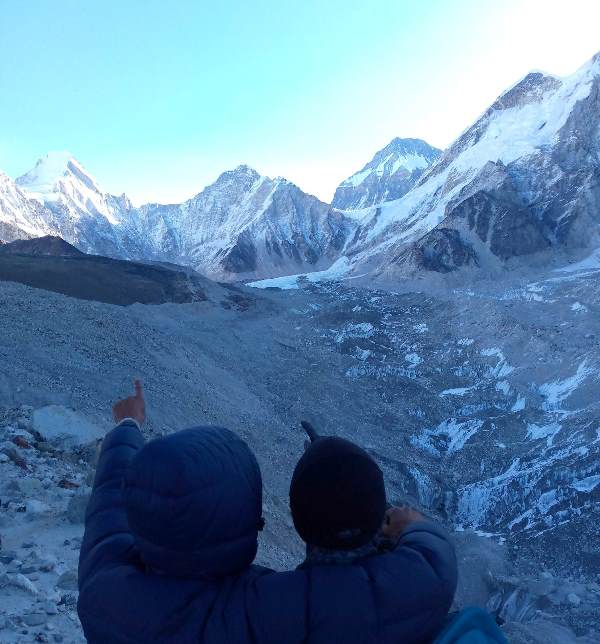
Yes, taking plenty of breaks and not overexerting yourself is crucial during any kind of physical activity, including trekking. This is especially important when trekking at high altitudes, such as during the Everest Base Camp trek.
Altitude sickness is a real concern during the EBC trek, and overexertion can increase the risk of developing it. It’s important to listen to your body and take breaks whenever you feel tired or short of breath. Don’t push yourself too hard, as this can lead to fatigue and decrease your enjoyment of the trek.
The EBC trek is a long and challenging trek, so it’s important to pace yourself and take your time. You can split up long trekking days into shorter sections with regular breaks to rest and recover. During these breaks, you can take off your backpack, stretch, and enjoy the beautiful scenery.
Additionally, it’s important to stay hydrated and well-fed during the trek. Drinking enough water and eating high-energy snacks can help you maintain your energy levels and reduce the risk of altitude sickness.
In summary, taking plenty of breaks and not overexerting yourself is essential for a safe and enjoyable EBC trek. It’s important to listen to your body, pace yourself, and prioritize rest and recovery.
Yes, hiring a local guide for the Everest Base Camp trek is highly recommended. A local guide can provide invaluable advice and assistance throughout the trek, especially for those who are not familiar with the area and the trail conditions.
Local guides are familiar with the trails, the culture, and the environment of the region. They can provide information about the local flora and fauna, the history of the region, and the customs and traditions of the people. They can also advise you on the best routes to take and the safest paths to follow, as well as provide assistance in case of any emergencies.
Local guides can also help you navigate the teahouses and accommodations along the way, as well as negotiate prices for food and lodging. They can also provide valuable insights into the local culture and customs, and help you interact with the locals in a respectful and meaningful way.
Moreover, hiring a local guide supports the local economy and helps to create jobs for people in the region. This is particularly important in remote areas such as the Everest region, where tourism is a major source of income for the local communities.
In conclusion, hiring a local guide for the Everest Base Camp trek is highly recommended. A local guide can provide invaluable assistance and advice, as well as help support the local economy.
Yes, being aware of the weather conditions in the Everest Base Camp region is essential when planning your trek. The weather in the region can be unpredictable and can change rapidly, especially during the monsoon season from June to August and the winter months from December to February.
During the trekking season from March to May and September to November, the weather is generally more stable, with clear skies and mild temperatures during the day. However, there can still be occasional snowfall, rain, and high winds, especially at higher altitudes.
It’s important to check the weather forecast before starting the trek and be prepared for any changes in the weather conditions. Bring appropriate clothing for all types of weather, including warm layers, rain gear, and waterproof hiking boots. It’s also important to pack a good quality sleeping bag and a warm jacket, as temperatures can drop significantly at night.
Additionally, it’s a good idea to plan your trekking itinerary around the weather conditions. If there are forecasts for heavy snowfall or rain, it may be better to delay your trek or adjust your route to avoid high-altitude passes or exposed areas.
In summary, being aware of the weather conditions in the Everest Base Camp region is crucial when planning your trek. By checking the weather forecast, bringing appropriate clothing, and planning you’re itinerary accordingly, you can ensure a safe and enjoyable trekking experience.
Yes, having a good first-aid kit with you and knowing how to use it is essential when trekking in the Everest Base Camp region or any remote area. The kit should contain basic supplies to treat minor injuries and illnesses, as well as medications specific to your needs.
Some of the essential items that should be included in a first-aid kit for the EBC trek are:
It’s also important to know how to use the items in your first-aid kit, as well as basic first-aid skills like treating blisters, cuts, and sprains. You can take a basic first-aid course before your trek or consult with a medical professional to ensure you are prepared.
Moreover, it’s a good idea to carry a personal medication kit if you have any pre-existing medical conditions. The kit should contain an ample supply of your prescribed medications, as well as any emergency medications like inhalers or EpiPens.
In summary, having a well-stocked first-aid kit and knowing how to use it is crucial when trekking in the Everest Base Camp region or any remote area. By being prepared, you can ensure that minor injuries and illnesses are treated promptly and prevent them from becoming serious problems.